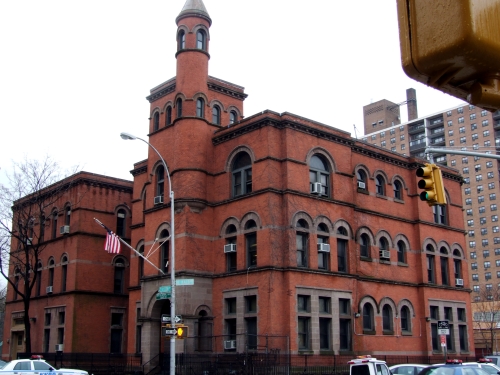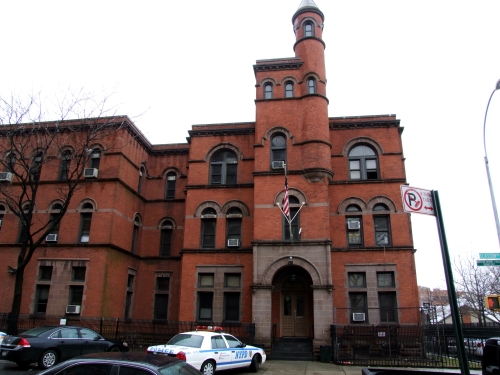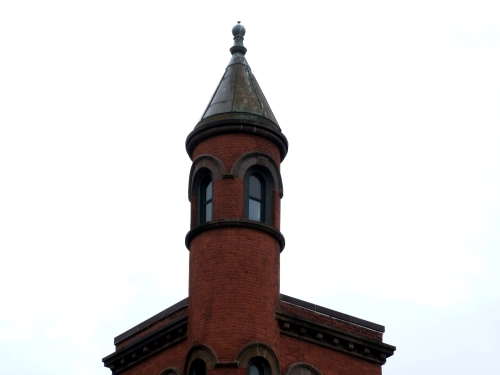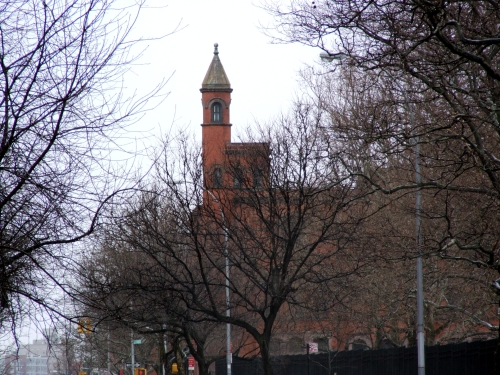Building of the Day: 298 Classon Avenue
Brooklyn, one building at a time. Name: 88th Precinct, originally Brooklyn’s 4th Precinct Address: 298 Classon Avenue Cross Streets: Corner of DeKalb Avenue Neighborhood: Clinton Hill Year Built: 1890 Architectural Style: Romanesque Revival Architect: George Ingram Other buildings by architect: 19th Precinct, Herbert St, E. Wmsbg; 18th Precinct, 4th Ave, Sunset Pk(both landmarked); old 22nd…

Brooklyn, one building at a time.
Name: 88th Precinct, originally Brooklyn’s 4th Precinct
Address: 298 Classon Avenue
Cross Streets: Corner of DeKalb Avenue
Neighborhood: Clinton Hill
Year Built: 1890
Architectural Style: Romanesque Revival
Architect: George Ingram
Other buildings by architect: 19th Precinct, Herbert St, E. Wmsbg; 18th Precinct, 4th Ave, Sunset Pk(both landmarked); old 22nd Precinct, Grand and Park Pl, Crown Hts N.
Landmarked: No
The story: George Ingram was the Assistant Engineer for the Brooklyn Department of City Works, in the mid-1880’s, when he undertook designing the basic framework for new precinct houses in Brooklyn. He ended up designing 6 or 7 precincts, most of which still stand, even though some are no longer used by the police department. The 88th Precinct building remains one of his most visible designs, and is still in use today, although the precinct itself was originally called the 4th Precinct.
Ingram favored the fortress castle look, and all of his buildings have a basic similarity, and share a lot of the same design motifs. He loved crenellation and towers, placing them either in the center or in a corner. This one has a central tower, with an extra round tower protruding from it. Arched windows abound, a classic Romanesque feature, as is the massing of different shapes, in a combination of red brick and brownstone. The buildings were meant to both impress and intimidate, attributes that his buildings did rather well. They were also designed to complement the architecture in the surrounding neighborhood, something no one thinks of in designing precincts today.
By the 1890’s, the police precinct was evolving into a mini armory complex, with jail space, as well as offices, interrogation rooms, dorms, stables and other facilities making it more self-contained. Ingram’s buildings had a central booking room, with the classic huge desk sergeant’s command post, as well as a stable block which also held the cell block. Upstairs were offices and file rooms, reading and ready rooms for the men, as well as lodging rooms, as a patrolman usually worked a 16 hour shift back then.
The old Fourth Precinct was pretty busy, covering Clinton Hill, Fort Greene, parts of Bedford, as well as much of the Wallabout area and Navy Yard. Crime ranged from petty theft to murder, with a lot of drunk and disorderlies, domestic violence, break-ins, and all kinds of thievery. The income range in that area was tremendous, from Clinton Hill’s rich, through the middle and working class to the poor in the tenements near the river and factories. The population was white, black, native born and immigrant, young and old. All of the prejudices, class issues, anti-immigrant discrimination and other social issues of the day played out with this building as a backdrop. Not surprisingly, they still do. GMAP








MM, you really go for that round arch style.
This building is a gem. A gem. I can’t believe it isn’t a landmark. What are they thinking down there at 1 Centre Street?
This is a truly great Brooklyn-centric building and it should receive official recognition.
Ingram was the Snyder of Police Houses.
Really.
MM, you really go for that round arch style.
This building is a gem. A gem. I can’t believe it isn’t a landmark. What are they thinking down there at 1 Centre Street?
This is a truly great Brooklyn-centric building and it should receive official recognition.
Ingram was the Snyder of Police Houses.
Really.